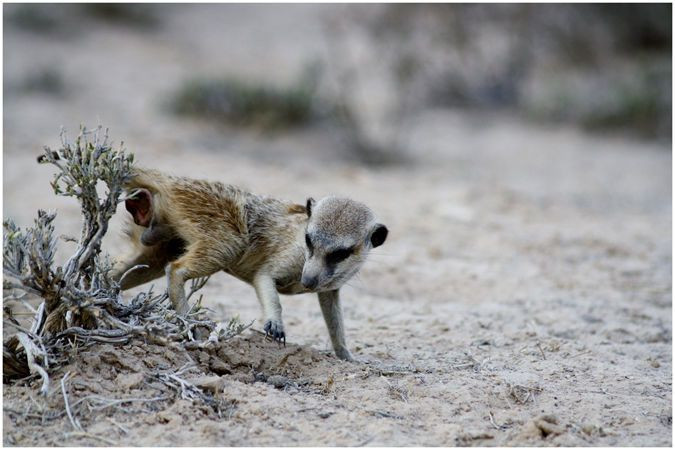The Chemistry Of Body Odor: How Bacteria Helps Animals Communicate Through Smell

Can you identify someone by how they smell? Body odor is as unique as a signature for one African animal, a scent mixture that comes from the microbes living inside them.
Meerkats are a type of mongoose that uses scent to communicate, including by marking their territory. When they do this, they turn an anal pouch outward and rub it against something, leaving secretions behind. Scientists say it could be the bacteria in those pouches that create a smell that communicates their sex, social status and family.
Read: These Animals Work With Other Species to Get the Job Done
A study in the journal Scientific Reports found the researchers analyzed secretions from wild meerkat anal glands, identifying what chemicals were in the pastes. They found that apart from the chemical makeup being different between the sexes, meerkats in the same group had more chemicals in common than they did with meerkat strangers.
The team also looked at the DNA of the bacteria in the secretions to identify what they are.
“Meerkat scent marks are too subtle for most humans to see or smell in the field, but they’re teeming with life,” Duke University said in a statement.
They found that the meerkats with more similar chemical odor profiles also had more similar bacterial communities in their glands. That link suggests the odor is a byproduct of the bacteria — as they are eating up secretions in the anal glands, they release the chemicals that produce a meerkat’s scent.
Does that sound familiar? Meerkats wouldn’t be the only animals to have a unique odor linked to bacteria. Duke’s Christine Drea, a co-author of the study, said humans are among the species that rely on such a system.
“Virtually all of the tell-tale odors in human armpits come from bacteria,” she said.
There are also elephants, hyenas, bats and other animals that use bacteria-created scents to communicate. In the case of humans specifically, the smell is used to “distinguish kin from strangers and choose among potential mates,” Duke said.
It goes far beyond simply marking territory and identifying a family member.
“Animals live in association with a suite of microorganisms that can affect host life-history traits and behavior,” the study says. “For instance, bacteria can influence host social behavior by directly influencing the nervous system or, more indirectly, by affecting chemical cues that animals use to communicate.”
Read: Sharks Probably Have More Friends Than You
The scientists on this study were hesitant, however, to say their results were definitive. They offered an alternative idea: that different groups of meerkats have different chemical compositions in their anal glands, which in turn affect the kind of bacteria that “can flourish and be detected,” the study said.
But if the bacteria are indeed the source of the unique chemical odor, how would meerkats within the same family acquire similar microbes? Drea explained they could exchange bacteria while rubbing up against the same surfaces or during social interactions, like grooming.
© Copyright IBTimes 2024. All rights reserved.





















